Parmigiano Reggiano cheese…Prosciutto di Parma…Balsamic vinegar…chances are your stomach has appreciated the bounty that comes from Parma, Italy, and the surrounding Po Valley even if you have never traveled there. But just imagine how much better it would be in person? If you are a “will travel for food” kind of person, Parma needs to be on your list.
Every visit to Parma, Italy needs to include a sampling of these delectable products, but there are other things to do in Parma that just might surprise you.
For example, did you know that Parma has had heavy French influences from the time the Duchy of Parma was under French rule? Or, did you know that as the birthplace of Verdi Parma is a musical city and hosts an opera festival each year?
Why Visit Parma, Italy
- While close to Bologna and not far from Milan, Parma is just off-the-beaten-path enough to avoid the crowds.
- Parma is a university town with a youthful vibrance that still feels laid back, versus the more chaotic Bologna.
- There are beautiful architectural attractions and fine art that draw in visitors who are looking to explore deeper into Italy’s Emilia-Romagna region.
- As a UNESCO City of Gastronomy, you can learn about the production of Parma ham, cheese, Balsamic vinegar, and more that has been passed down through generations.
- From musical festivals to a stunning Opera House, Parma is a musical city.
- Unlike the more popular cities in northern Italy (like Venice), Parma is very affordable too.
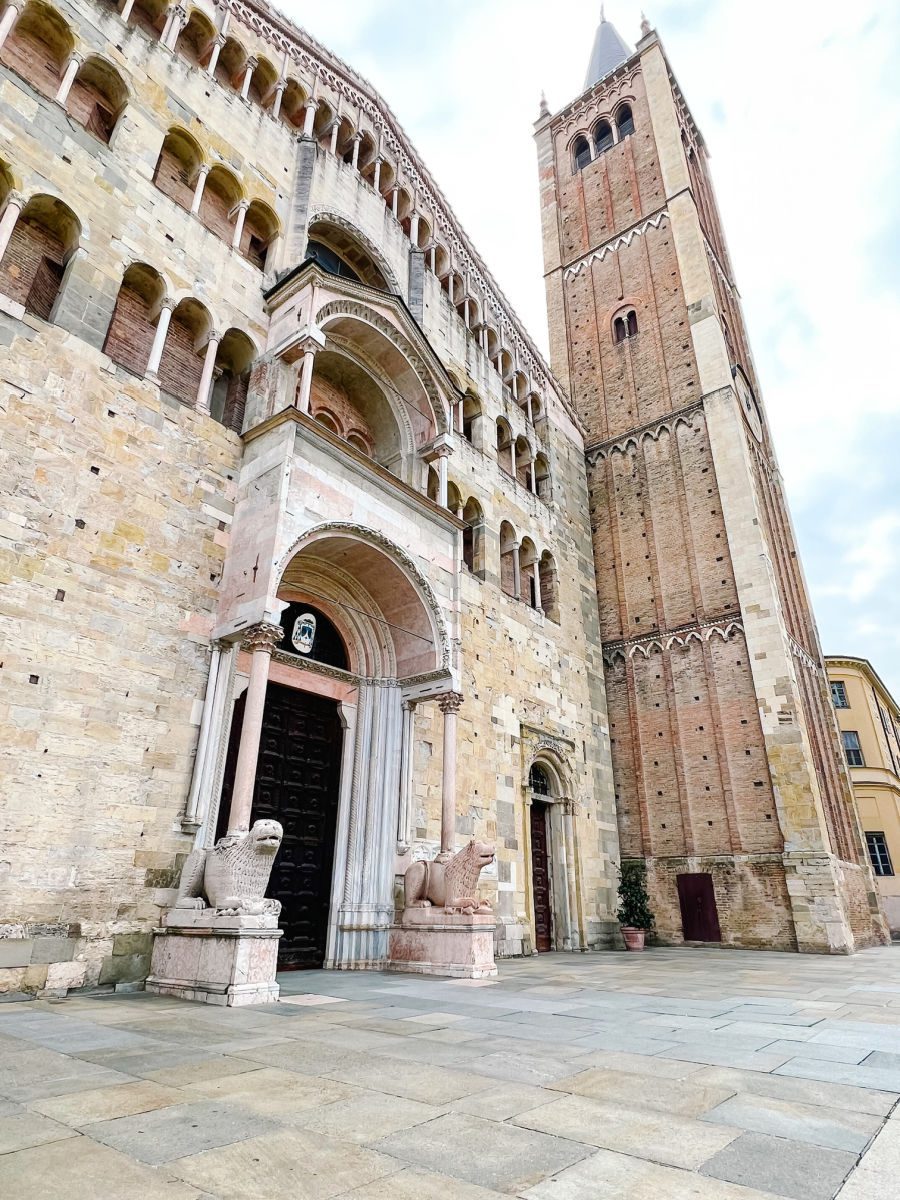
How Long to Spend in Parma
After spending five days in Piemonte feasting on truffles and Barolo, two days in Verona scarfing down risotto Amarone, and two days in Bologna slurping tortellini in brodo, my stomach was primed to spend two days in Parma before wrapping up my Northern Italy extravaganza.
You can certainly visit Parma on a day trip from Bologna, but I’d recommend spending at least two days.
Best Things to do in Parma, Italy
Note: This post may contain affiliate links. If you click a link and make a purchase, I may receive a small commission. All opinions are my own.
If you have two days to spend in Parma, I’d suggest using one to explore the Food Valley (ideally with a guided tour of various producers) and at least one full day enjoying the city itself. These are the top sights you can’t miss.
Start at Piazza della Pace
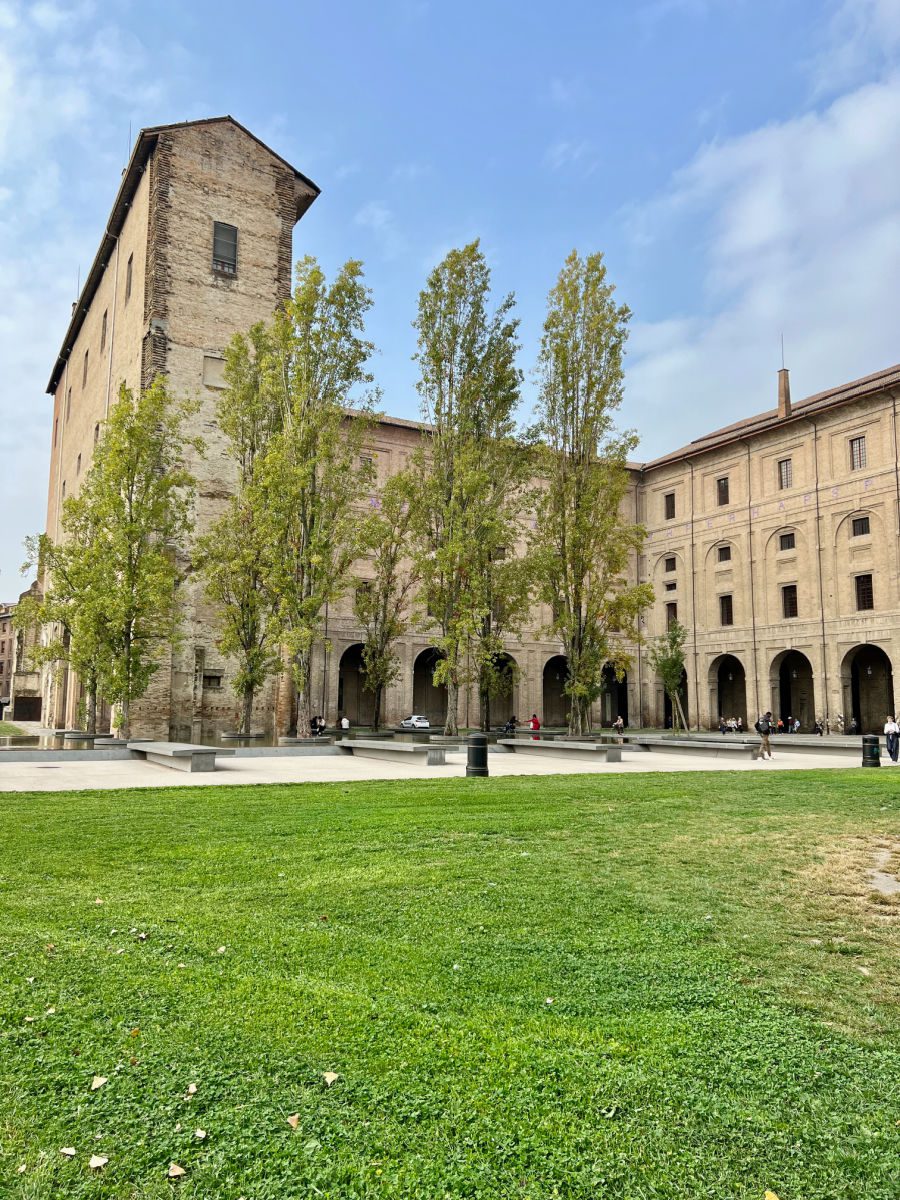
Start your day in Parma in the Piazza della Pace in front of the Palazzo della Pilotta. Dating back to the 1600s, the Palazzo houses a museum complex that includes one of Europe’s richest art collections. The Piazza in front has various monuments and fountains, along with green space where locals and students gather and lounge in the Italian sunshine. This is a good spot to start your walking tour of Parma and start learning about the city’s rich history.
Ideally, you would sign up for a walking tour of Parma or at least read up on the city’s history as a Papal State and French Duchy before visiting.
See the Teatro Farnese
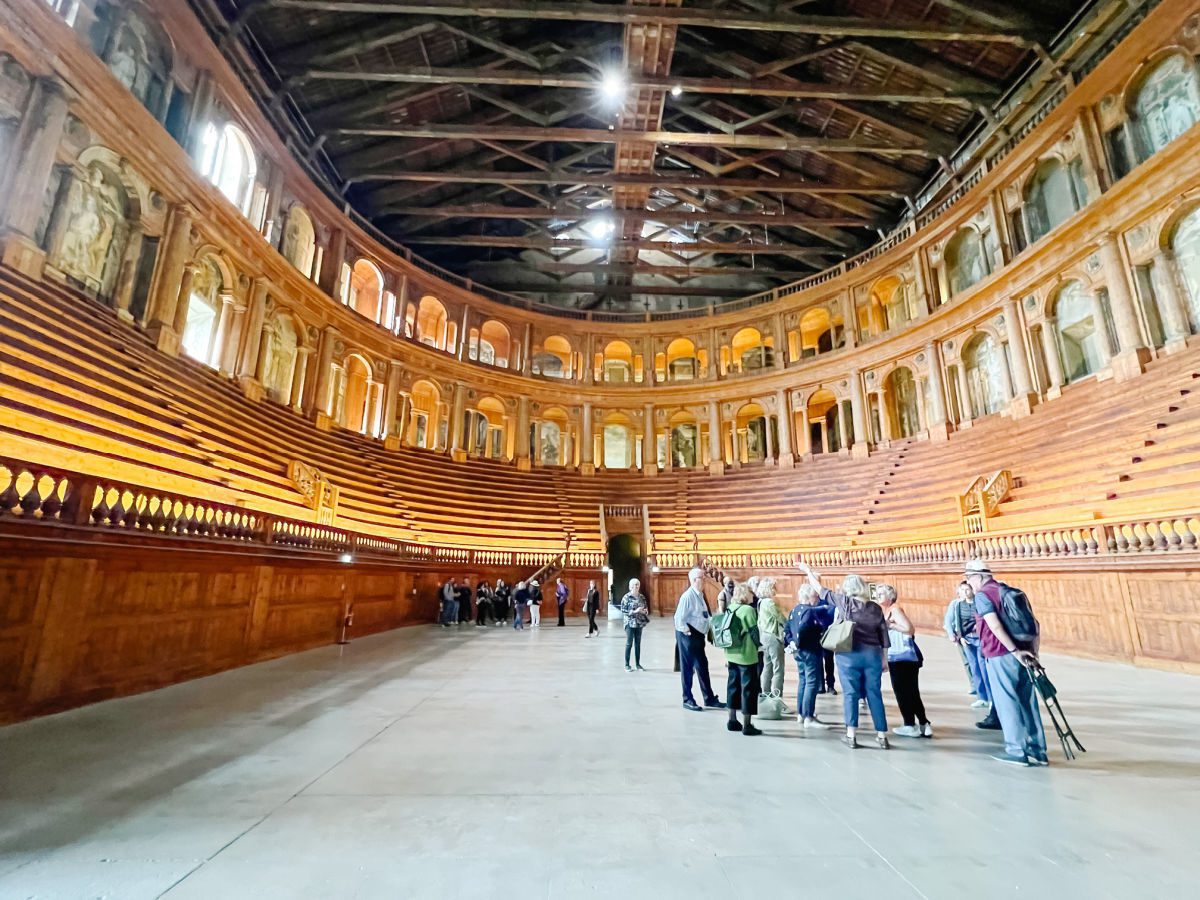
The Palazzo della Pilotta houses four museums, the Parma National Gallery, the Palatine Library, the National Archeological Museum, and the Teatro Farnese, or the Farnese Theater. The Farnese Theater is one of the largest Baroque theaters in Europe and it has seen many grand productions and feats of engineering in its centuries of operation.
While the theater suffered from great damage during the bombing in World War II, it has been rebuilt in its original style. While not all guided tours enter the museums of Palazzo della Pilotta, don’t miss returning and visiting on your own. The wooden gallery and sculptures are quite stunning in scale and design. If you get a chance to peek behind the stage, you can glimpse how elaborate productions were concocted to shock theatergoers of old with horses and water flooding the stage.
Keep in mind: one ticket to the Palazzo complex provides entrance to all four museums. The museums are closed on Mondays.
Tour the National Gallery of Parma
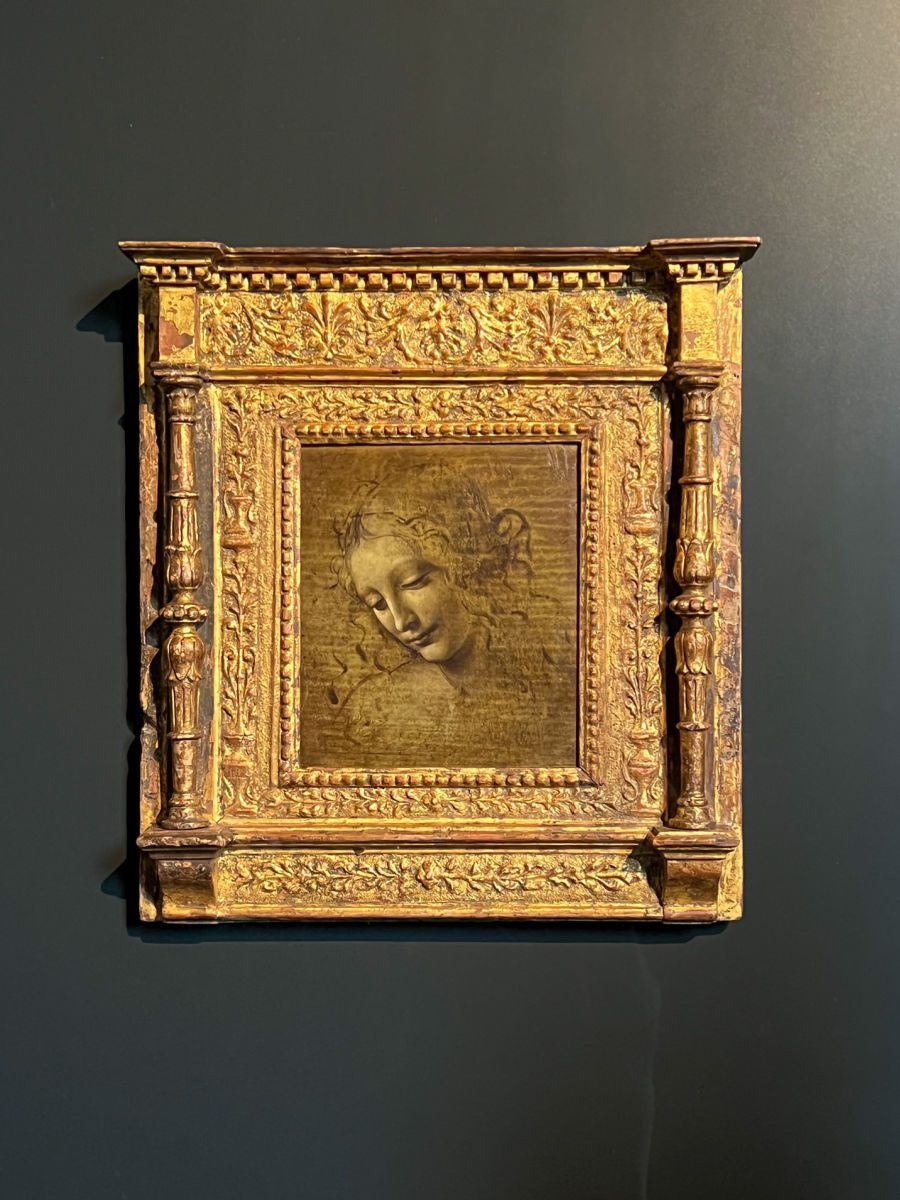
If you have visited the world-famous art museums in Rome and Florence, you will be surprised by the size and quality of the collection of masters in the National Gallery in Parma (and the blissful lack of crowds!) Austrian Archduchess Maria Luigia of Austria, who was the second wife of Napoleon and Duchess of Parma from 1814 until her death, had a large role in the development and expansion of the Gallery.
This surprisingly large and refined gallery includes many masterpieces including:
- La Scapigliata (The Lady with Disheveled Hair) by Leonardo da Vinci
- Madonna della Scala (Madonna of the Steps) by Correggio
Plan to spend about an hour (or longer for art enthusiasts) exploring the National Gallery.
Walk through the Palatine Library

If you are a lover of books and libraries, such as the Long Room at Trinity College in Dublin, a brief visit to the Palatine Library in the Palazzo della Pilotta is a must. Built in the 1700s, today the Palatine Library is a state-of-the-art research library with over 700,000 books, manuscripts, and other materials.
Bibliophiles will love the smell of books and the vast shelves of the library, while architecture fans will appreciate the soaring main gallery.
Stroll through Parco Ducale
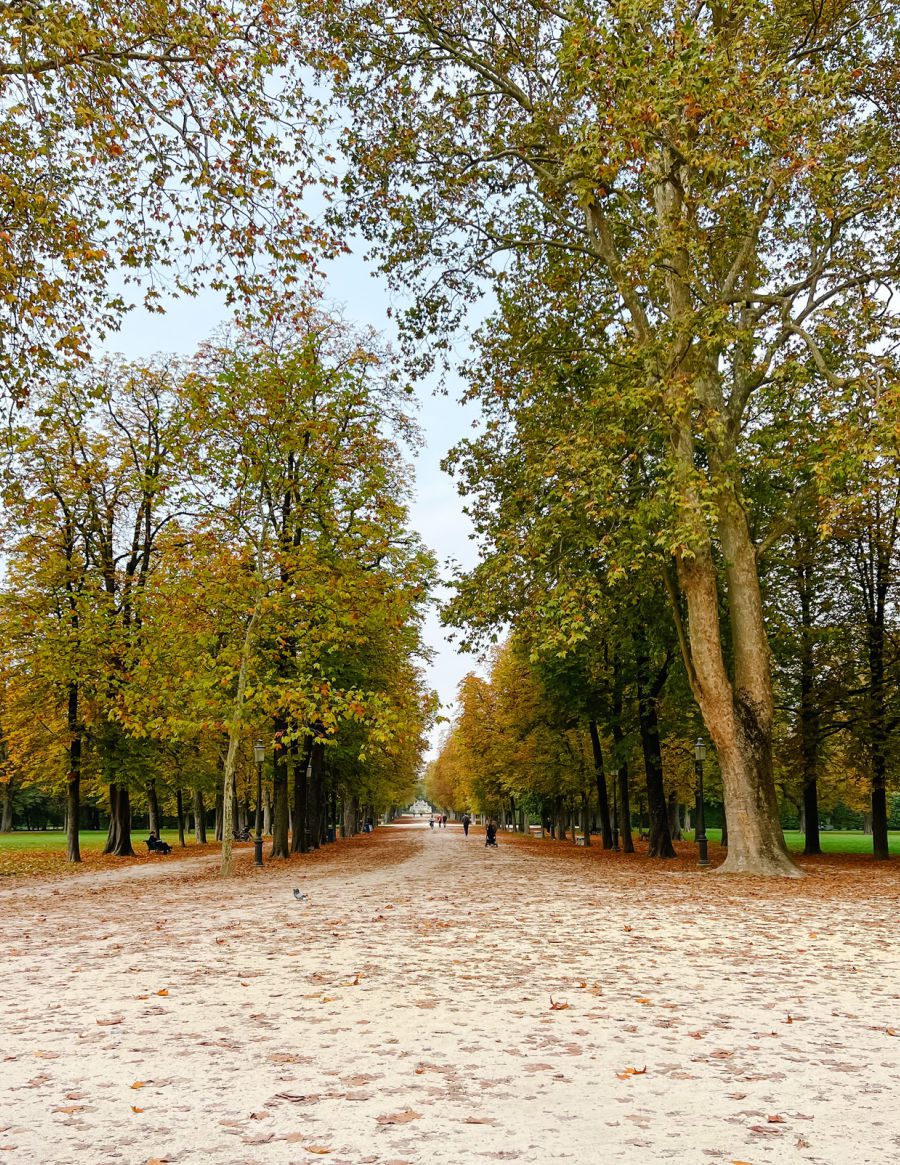
After the museums, I’d suggest taking a stroll through the peaceful Parco Ducal. This tranquil park was created in the 16th century by Duke Ranuccio I Farnese and was originally designed as a hunting reserve and later opened to the public in the 18th century.
The 100+ acre park just across the River Parma reminds me a bit of the Luxembourg Gardens in Paris, with tree-lined, pebble walkways and several ponds, fountains, and statues.
Be Wowed at the Santa Maria Assunta Cathedral
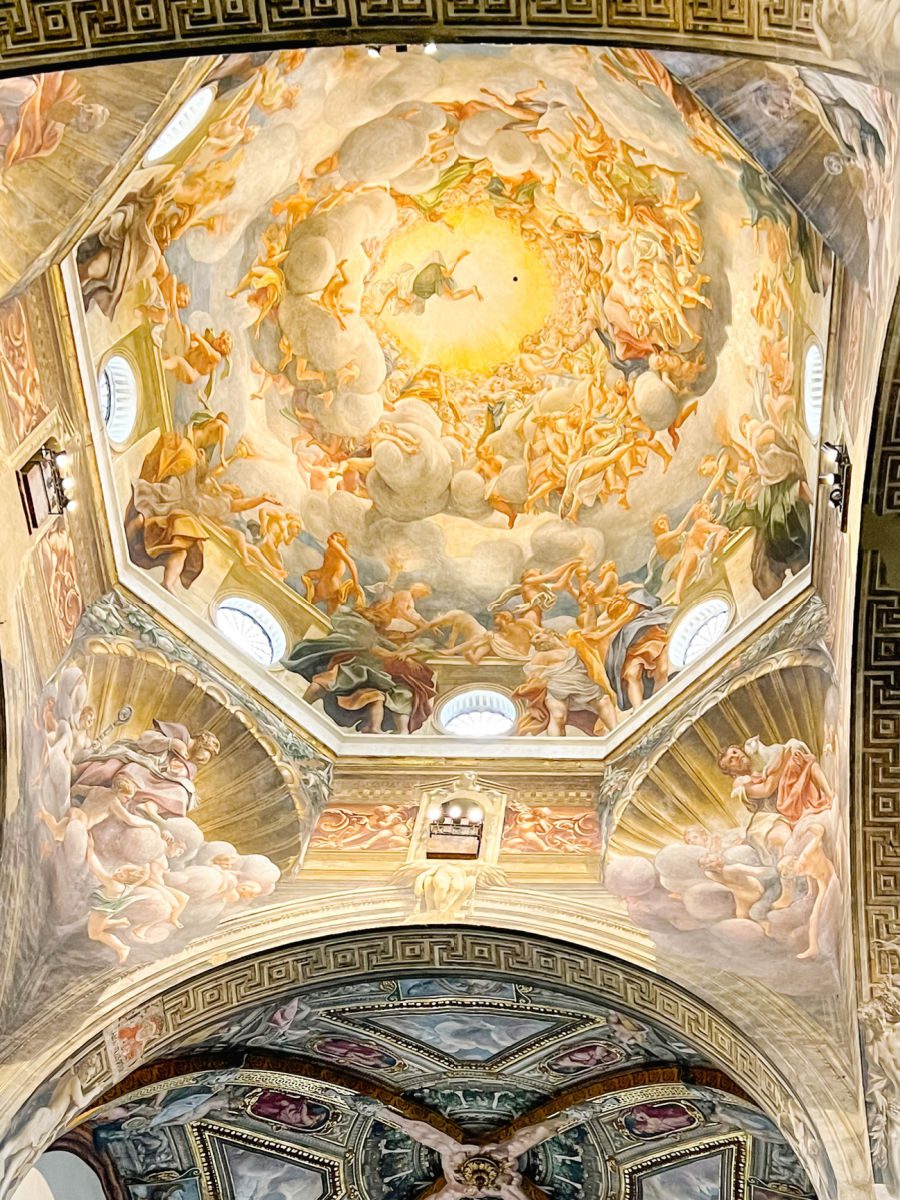
From the park, I’d suggest crossing back over the river to the Piazza Duomo Parma, where you will find the Cathedral of Parma, Santa Maria Assunta, home of the Duomo di Parma. If you are hungry, you may want to have lunch at Ristorante Angiol d’Or. I’d recommend the traditional menu with a selection of Parma ham, fried dough, delicious Tortelli, and roast veal — just be forewarned that you may be too full for dinner.
Before entering the Cathedral of Parma, look up at the Romanesque facade with its intricate carvings and three levels of loggias. The Cathedral is also known as the Duomo of Parma and is renowned for its breathtaking fresco by the Renaissance painter Antonio da Correggio.
The dome is one of the largest in Italy and is decorated with Correggio’s masterpiece, “The Assumption of the Virgin.” This fresco depicts the Virgin Mary ascending into heaven, surrounded by a swirl of angels and saints. I’ve visited many beautiful cathedrals in Europe and I was still awed by Correggio’s masterful use of perspective and light that makes it seem as if the figures are floating effortlessly upwards.
Note: while the Cathedral is open from 7.45 am to 7.20 pm, I found that it is closed for lunch and during religious services so you may want to plan accordingly.
Take in the San Giovanni Battista Baptistery
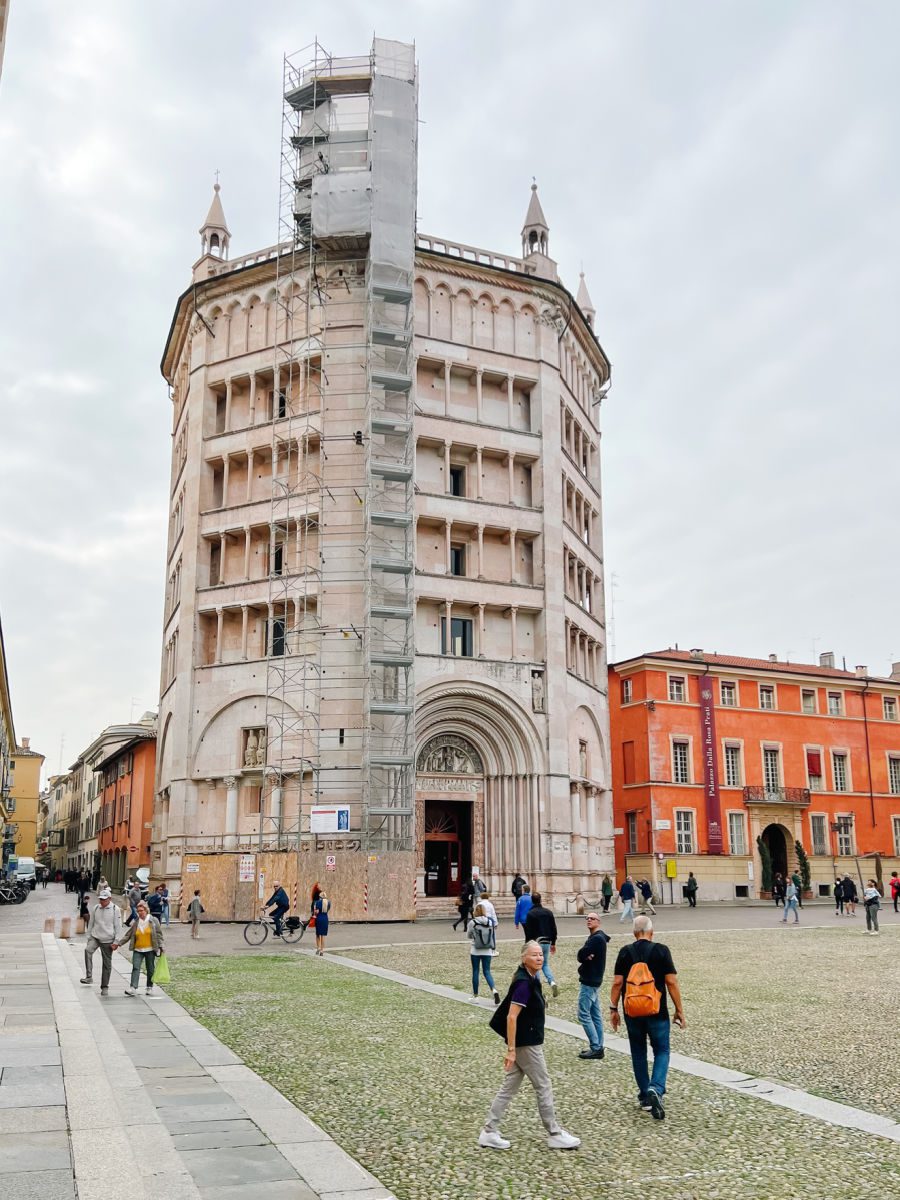
Commissioned in 1196 and completed in 1307, this 125-foot octagonal tower blends both Romanesque to Gothic architectural styles, with pointed arches and intricate carvings. The baptistery is adorned with sculptures by Benedetto Antelami, including bas-reliefs depicting various biblical scenes and statues of the Apostles, adding depth and richness to the baptistery’s exterior.
Located just next door to the Cathedral, inside you can see the baptismal font and frescoes on the walls that depict scenes from the life of Christ and Saint John the Baptist.
Note: Entrance to the Cathedral is free, but you do need a ticket to visit the Baptistery and Diocesan Museum.
People watch in Piazza Garibaldi

Piazza Garibaldi is a vibrant square that serves as the heart of Parma in the city’s historic center. Named after Italy’s national hero Giuseppe Garibaldi, it is here that you see the signature yellow that you will find throughout Parma, a carryover from its days as a French Duchy.
The Palazzo del Governatore, with its impressive facade and astronomical clock, borders the square. If you want a snack, get a gelato from local favorite Ciacco nearby (or there is also a location of the more ubiquitous Grom.)
Tour the Teatro Regio
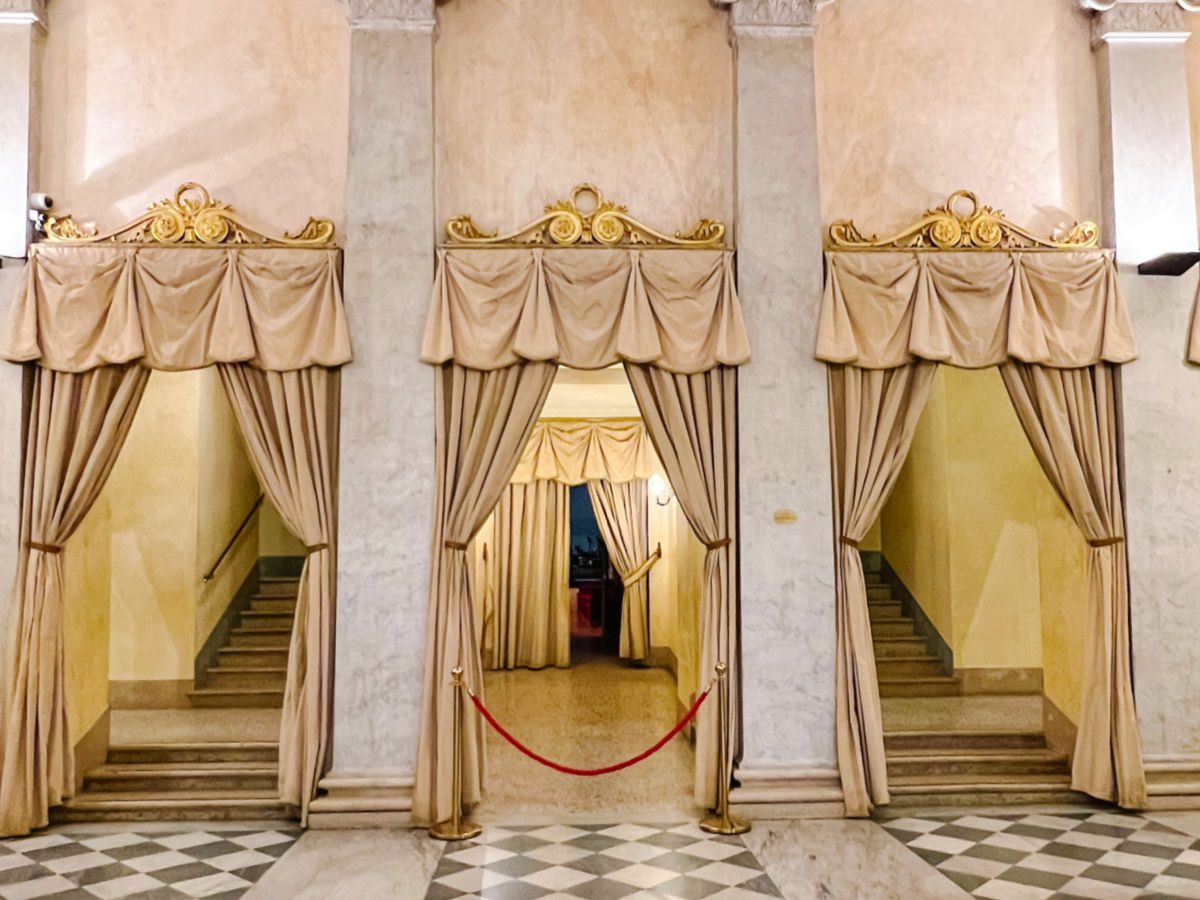
The Teatro Regio di Parma was built in 1829, during the reign of Duchess Marie Louise of Austria, and remains one of the most prestigious opera houses in the world. It has hosted premieres of operas by some of the world’s most famous composers, including Verdi, Puccini, and Mascagni.
While you are in town, you can check the calendar to see what performances are being held. Opera lovers may want to plan their visit during the Verdi Festival, which takes place from mid-September through mid-October (it had just finished when I visited.)
Guided tours of the theater are available from Tuesday to Saturday, 9:30 am to 12:30 pm and 2:30 pm to 5:30 pm on the hour, and Sundays from 10:00 am to 4:00 pm.
If you are looking for a unique gift to remember your time in Parma (beyond food!), stop at the Theater’s bookstore, which has been run for three generations by the Azzali family, long-standing publishers of the city. You can purchase books and music, but also a perfume called “Marie Luigia Violet”, which is said to have been the Empress’s favorite scent.
Take a Food Tour
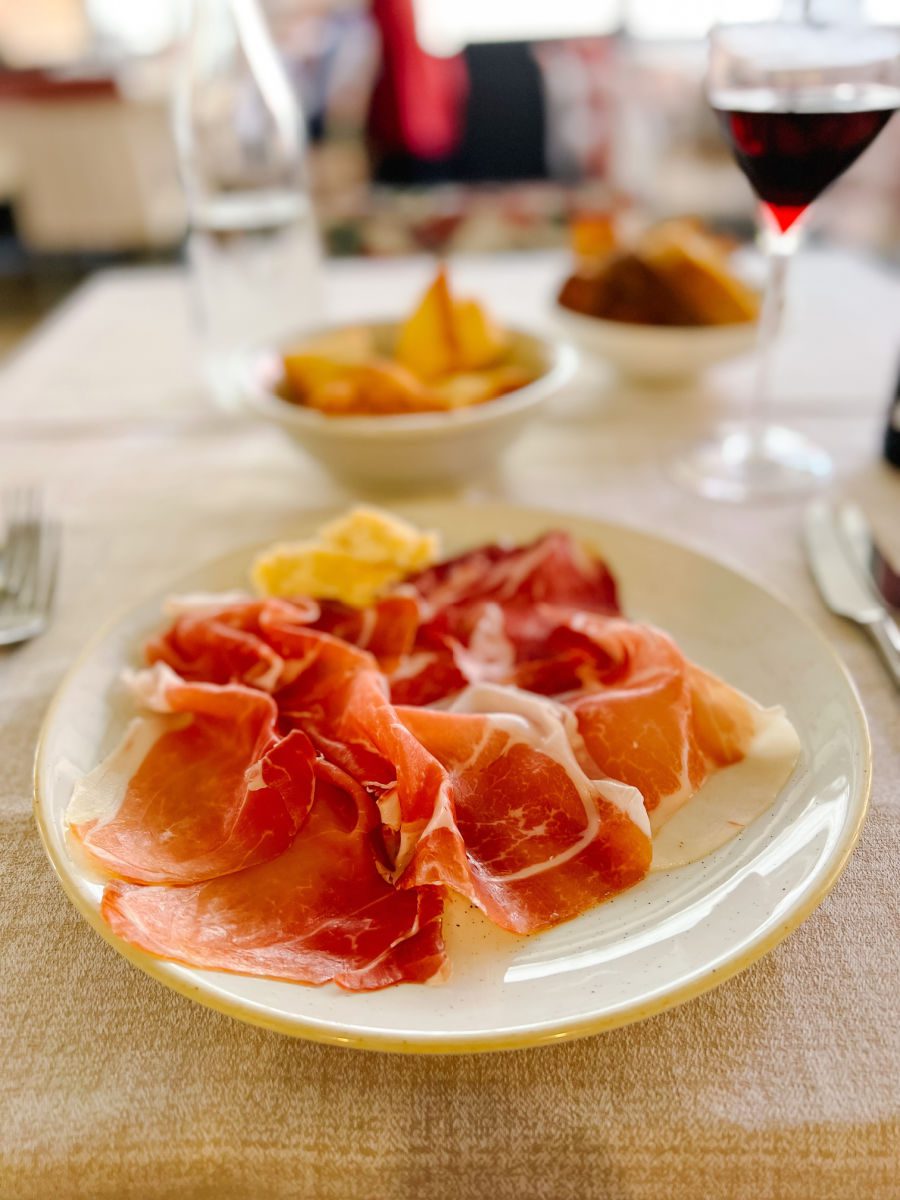
With such a wealth of food in this small city, taking a food tour of Parma is a great way to experience the highlights in just a short time. If you only have one day in the city, you will need to plan around the food tour time to squeeze in the other attractions. However, if you have longer you can enjoy both the food in the city and the Food Valley.
Just keep in mind that you typically need a minimum of two people for the tour to take place. When I visited, I booked a food tour with Do Eat Better Experience but since I was traveling solo and they didn’t get any other bookings, they had to cancel. It goes to show that Parma isn’t mobbed with tourists at least!
See Roman Ruins
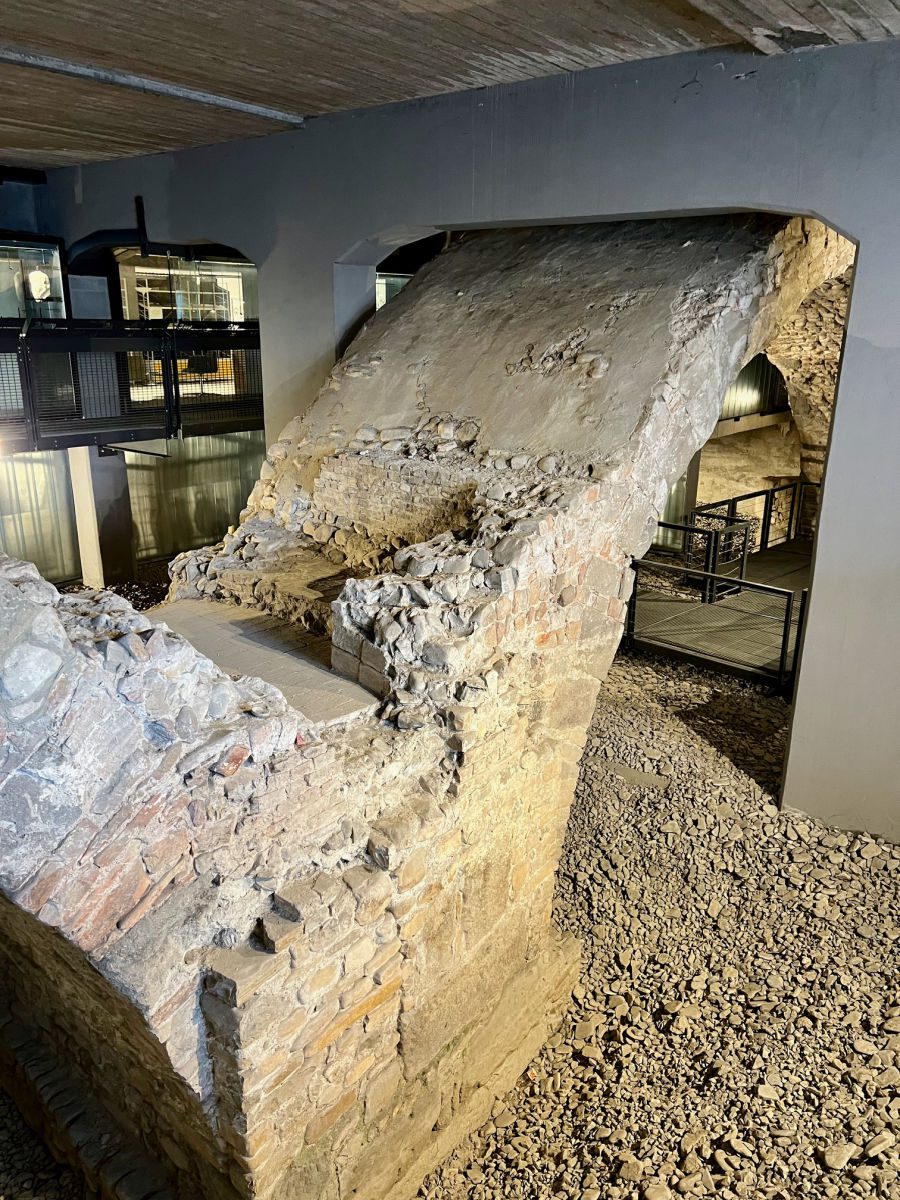
Throughout Parma, you will see evidence of earlier Roman times such as the Arco d’Augusto and the partially-excavated Roman amphitheater. You can also walk over to the open-air Mercato di Campagna, which is a great place to find local produce, flowers, and souvenirs when the market is taking place.
Nearby, you can see the Ponte Romano bridge that was built in the 1st century AD. Under the bridge, you can see a collection of vessels, coins, jewelry, and other ancient relics.
Eat along Via Farini
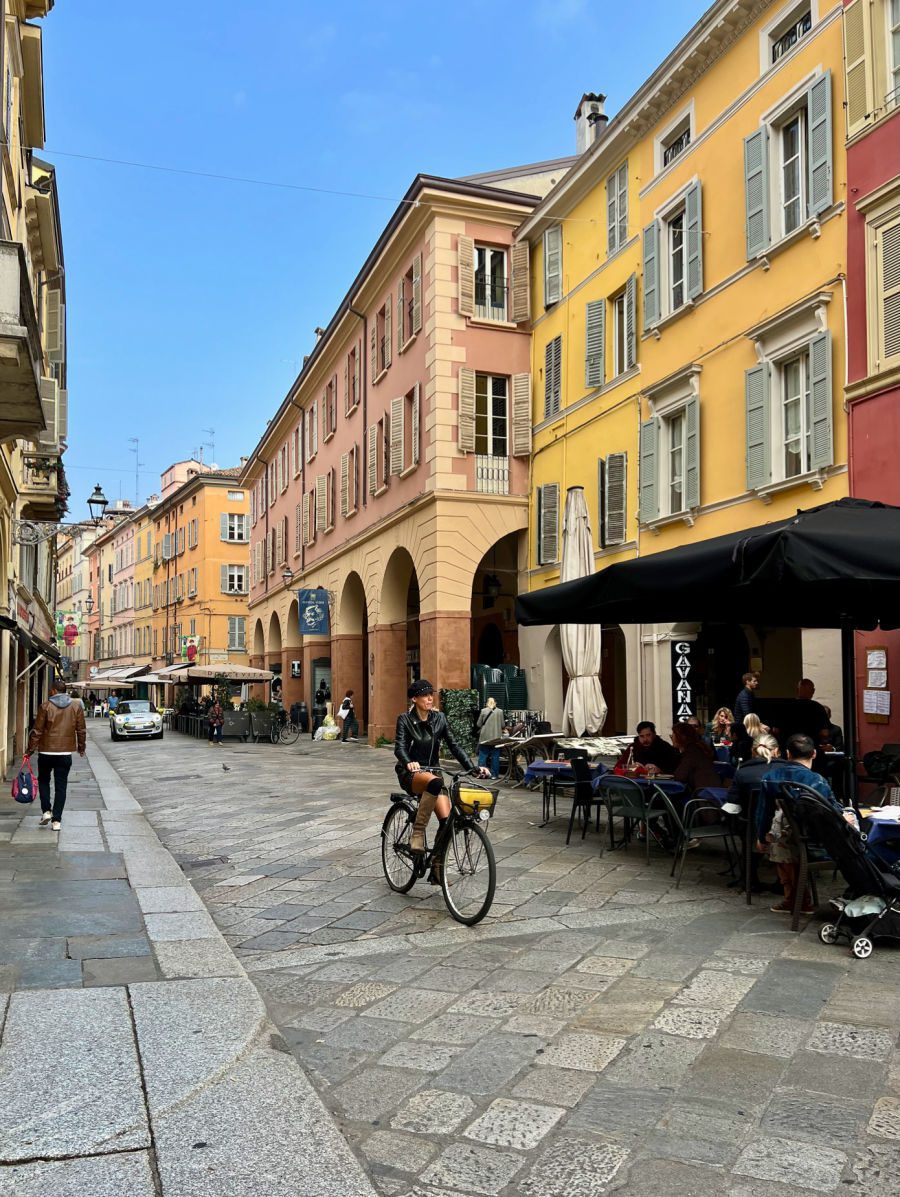
If you don’t take a food tour, be sure to wander down Via Farini and pop into the many family-run stores there, such as Rastelli Formaggeria & Salumeria that specialize in meats, cheeses, and other specialty items. This street is also lined with ristorantes and enotecas if you are looking for a spot for lunch or dinner.
Make time to also stroll through the smaller side streets in the city center and poke around the old shops with goods made from leather, glass, wood, and paper. A couple of other restaurants that were recommended to me for dinner include Trattoria Corrieri and Osteria del Teatro.
Tour a Parmigiano-Reggiano Factory
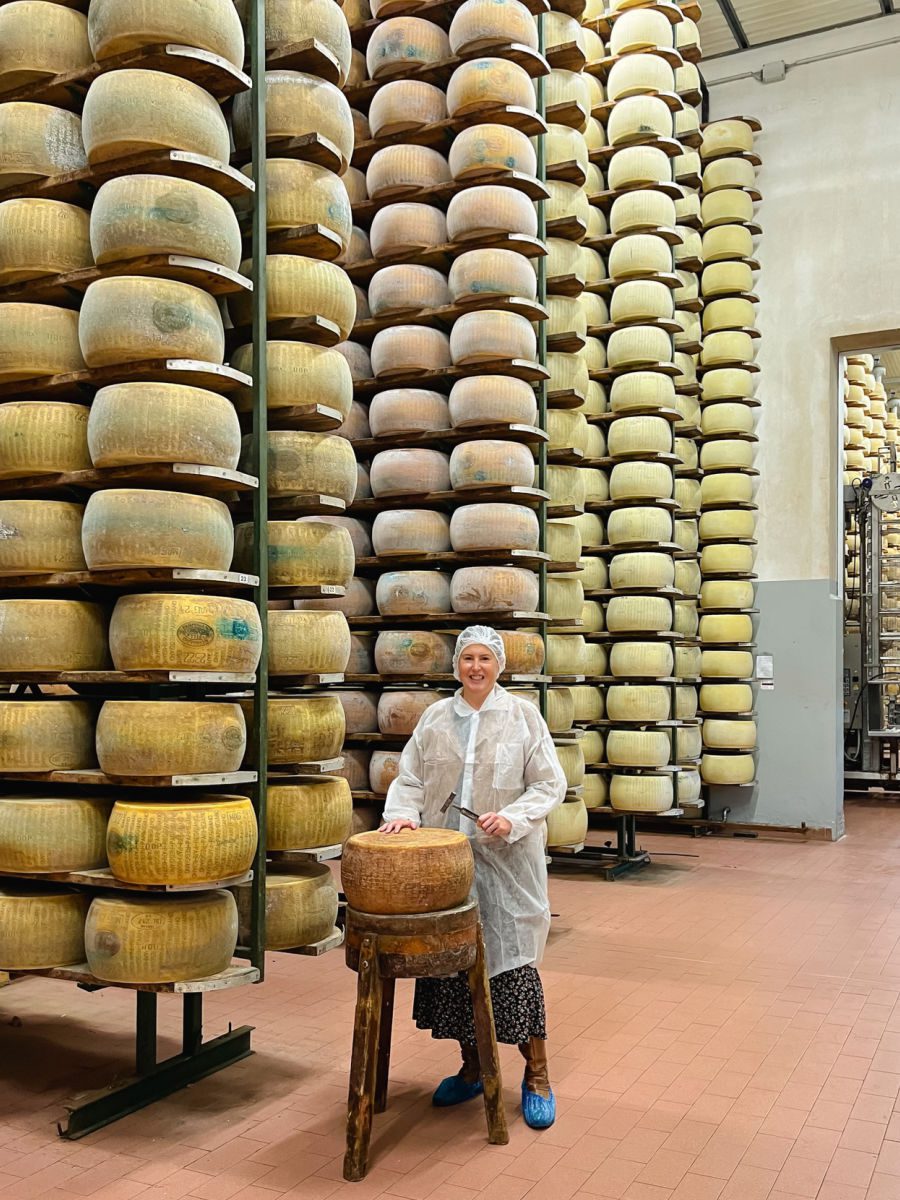
If you fit all the above into one day in Parma, kudos to you! Now you have time to explore the Food Valley. Sure you can sample amazing Parma ham and parmesan cheese in town, but it is pretty thrilling to get to see the production in action (especially for a cheese lover like me!) You could rent a car and try to make appointments on your own, but it is honestly a lot easier just to book a tour.
I took a full-day tour with Food Valley Travel and they have all sorts of amazing experiences including truffle hunting, wine tasting, gelato making, cooking classes, and more. I booked the “Big Five” full day tour with a driver that included visits to a Parmigiana-Reggiano factory, an artisanal family-run producer of Culatello di Zibello, a private wine tasting and lunch in the hills of Parma, a family-run producer of Prosciutto di Parma, and a family-run production of traditional Balsamic vinegar.
This tour was amazing, but it was also a long, full day with a LOT of food (I had to skip dinner for the second night.) Looking back, I wish I had booked one of these shorter tours instead:
- Half-day Parmesan, Parma Ham & Balsamic Vinegar Tour (since these were my favorite stops!)
- Parmigiano Reggiano Tour and Tasting
- Self-drive food tour with tastings and lunch (this will be cheaper if you have your own car)
It was a huge thrill for this cheese lover to get to see how Parmesan cheese is made, from beginning to end, and to walk through the factory that houses over 80,000 giant cheese wheels! I felt like I was on an episode of Stanley Tucci: Searching for Italy. Plus, the tour finished with a tasting of cheeses of various ages (delizioso!) and there was a store to make purchases.
I put together this Instagram Reel to give you a little sneak peek:
Note: You need to wear closed-toe shoes. You will be given personal protective clothing including a smock, shoe covers, and a hair net when entering the factory (so don’t worry too much about your outfit for photos, lol!) And, it is chilly in the factory so you may want to bring a sweater or an extra layer.
Bringing cheese back home: Keep in mind that hard-cured cheese such as parmesan or cheddar are generally admissible in the U.S. if they are vacuum-sealed, while soft cheeses such as brie and soft curd cheese and cheese in water(ricotta, feta, etc.) are not.
But cured hams (prosciutto, Serrano ham, Iberian ham) and salami from areas within France, Germany, Italy, and Spain may not be brought into the United States by travelers. (So eat it while you are in Italy!)
Tour a Parma Ham Factory
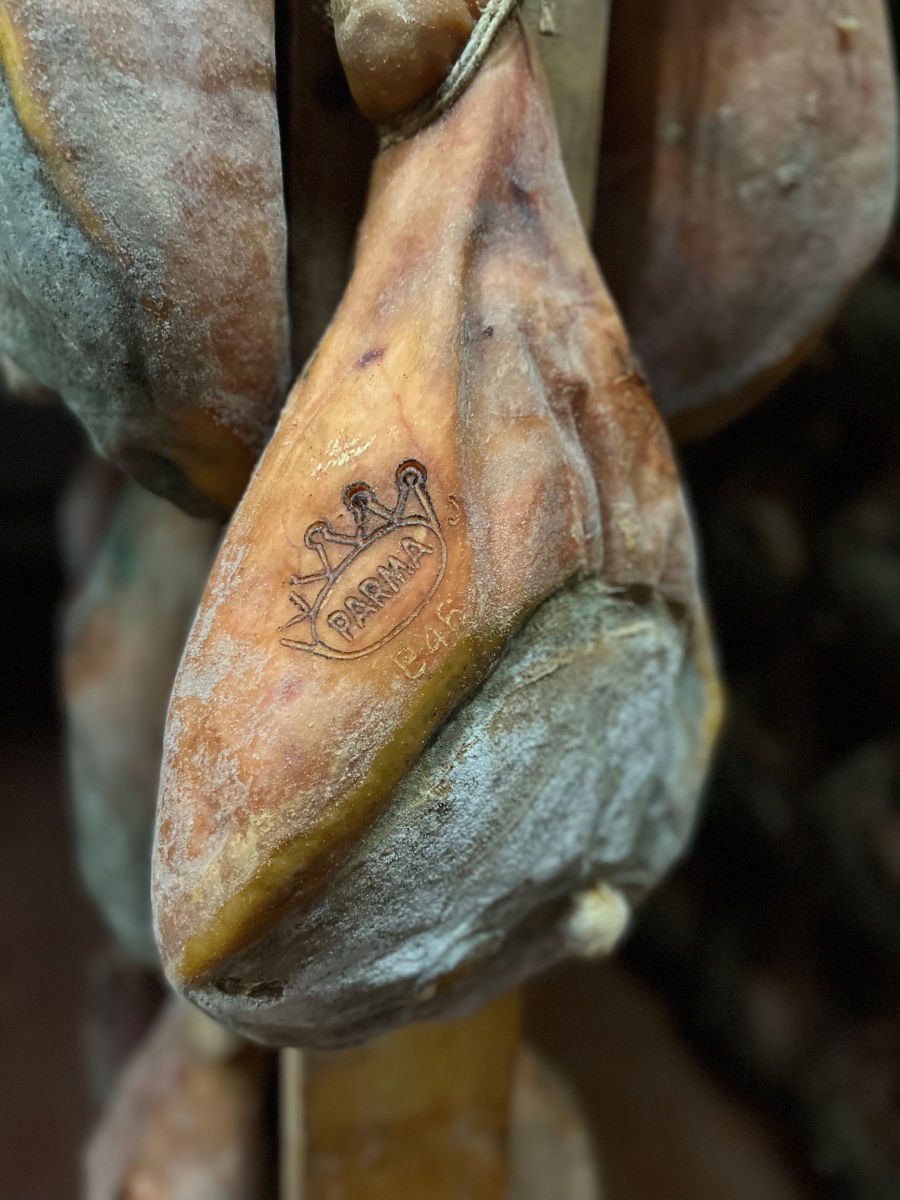
Parma ham, or what we call Prosciutto di Parma, is a mainstay of this region and it is fascinating to see what happens behind the scenes to bring this delight to our plates. On my tour, we visited the Conti factory, which is a women-run business, that produces 60,000 hams per year.
The process starts with the selection of high-quality pigs from specific breeds raised in the Emilia-Romagna region or throughout Italy for the production of other meats. The large white pigs are the best for true Parma ham and Parma ham also has a specific high-quality salt that is used.
The legs are carefully trimmed and salted, ensuring the perfect balance of flavor and preservation. After a period of rest, the legs are moved to curing rooms, where they undergo a slow, natural curing process that can last up to a year. As you walk through the factory, you’ll witness each stage of the production process, from the initial salting to the final aging, and appreciate the skill of the workers in how they expertly trim and shape the hams.
And of course, you’ll have the opportunity to sample the finished product! You can do a taste comparison between Prosciutto di Parma, Prosciutto di National, Culatello, and others.
Note: I’m sure if you are a vegetarian you wouldn’t even consider this tour, but it also isn’t great if you have a sensitive stomach or nose. Those thousands of curing meats hanging together have quite an aroma!
Taste Balsamic Vinegar
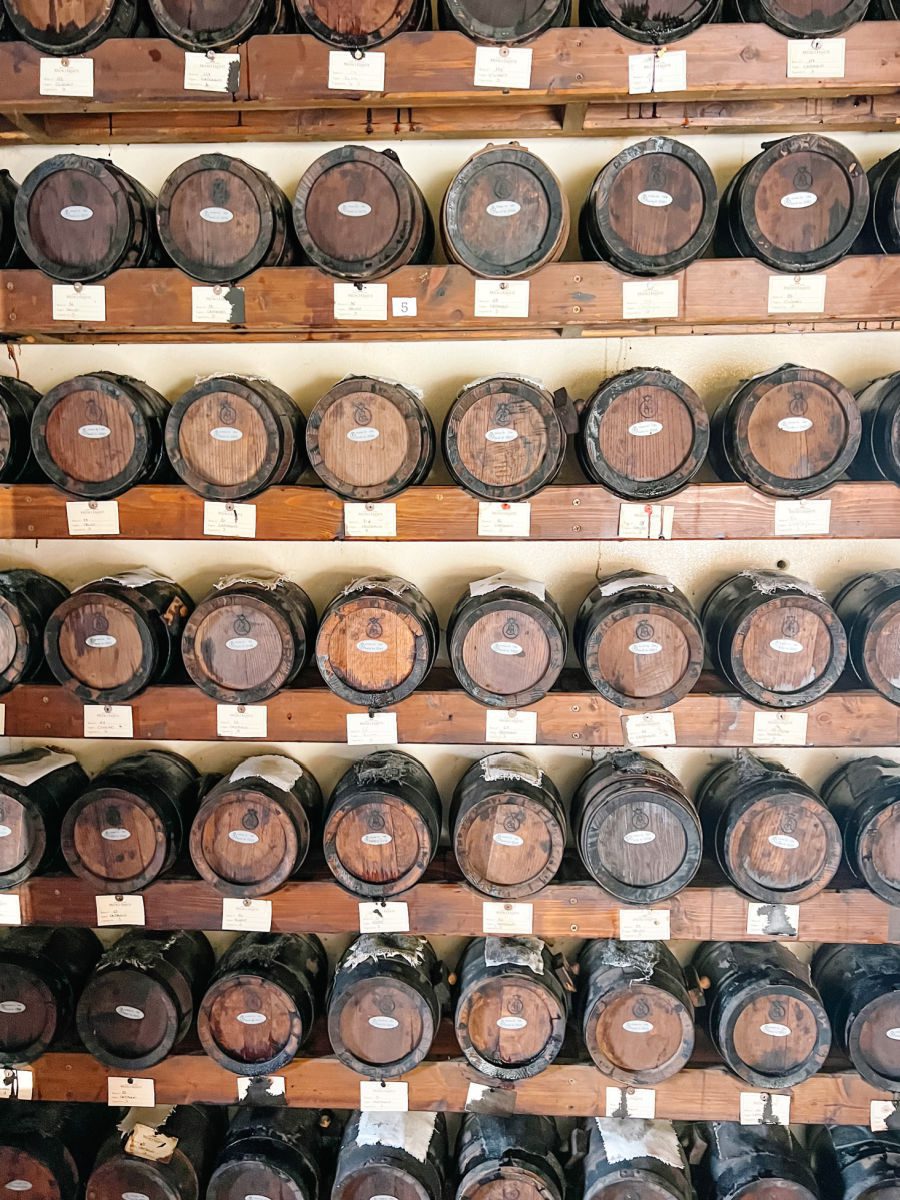
Modena is probably the most famous for its high-quality Balsamic Vinegar, but Balsamic Vinegar of Modena and Traditional Balsamic Vinegar of Reggio Emilia are both two of the most renowned and coveted vinegars in the world. Both are produced in the Emilia-Romagna region of Italy, but they have distinct characteristics and differences.
Getting to visit a Balsamic Vinegar producer is such a treat, not only because of the tasting at the end, but because you learn what a labor of love and time it is to make this “liquid gold.” Typically it is a family operation that also makes wine because vinegar doesn’t pay the bills since it takes so much time to produce just a small amount.
Traditional Balsamic Vinegar of Reggio Emilia is typically made from Lambrusco, Ancellotta, Trebbiano, Sangiovese, Albana, Montuni, Malvasia, Cabernet Sauvignon, and Merlot grapes from the Reggio Emilia province. It ages for a minimum of 12 years in a series of wooden barrels made from different types of wood, such as oak, chestnut, mulberry, and acacia.
The Vinegar has a sweet, complex taste and is dense, dark brown, and somewhat syrupy. If you visit, be sure to spend the extra money to buy a small bottle to take home!
Where to Stay in Parma
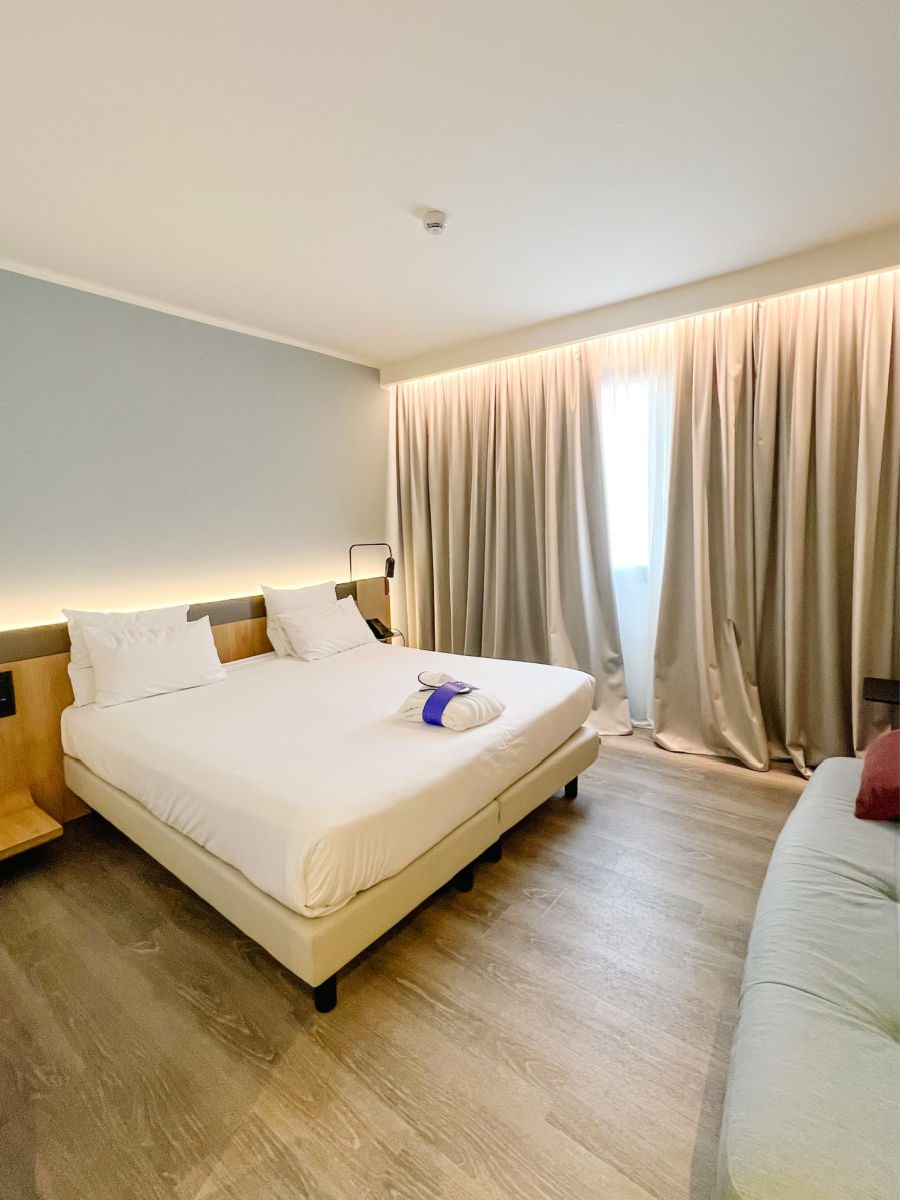
Since I was taking the train from Bologna, I chose to stay near the train station at the Novotel Parma Centro, so I didn’t need to worry about schlepping my bag very far. The hotel was fine, inexpensive, and not a far walk to the main attractions. I wouldn’t go out of my way to stay there, but it certainly worked for two nights. I’d also considered the NH Parma, which is right on top of the train station. The downside to both is that the trains can be quite noisy, especially if you have to leave the windows open for fresh air.
Find more places to stay in Parma:
Getting to and Getting Around Parma
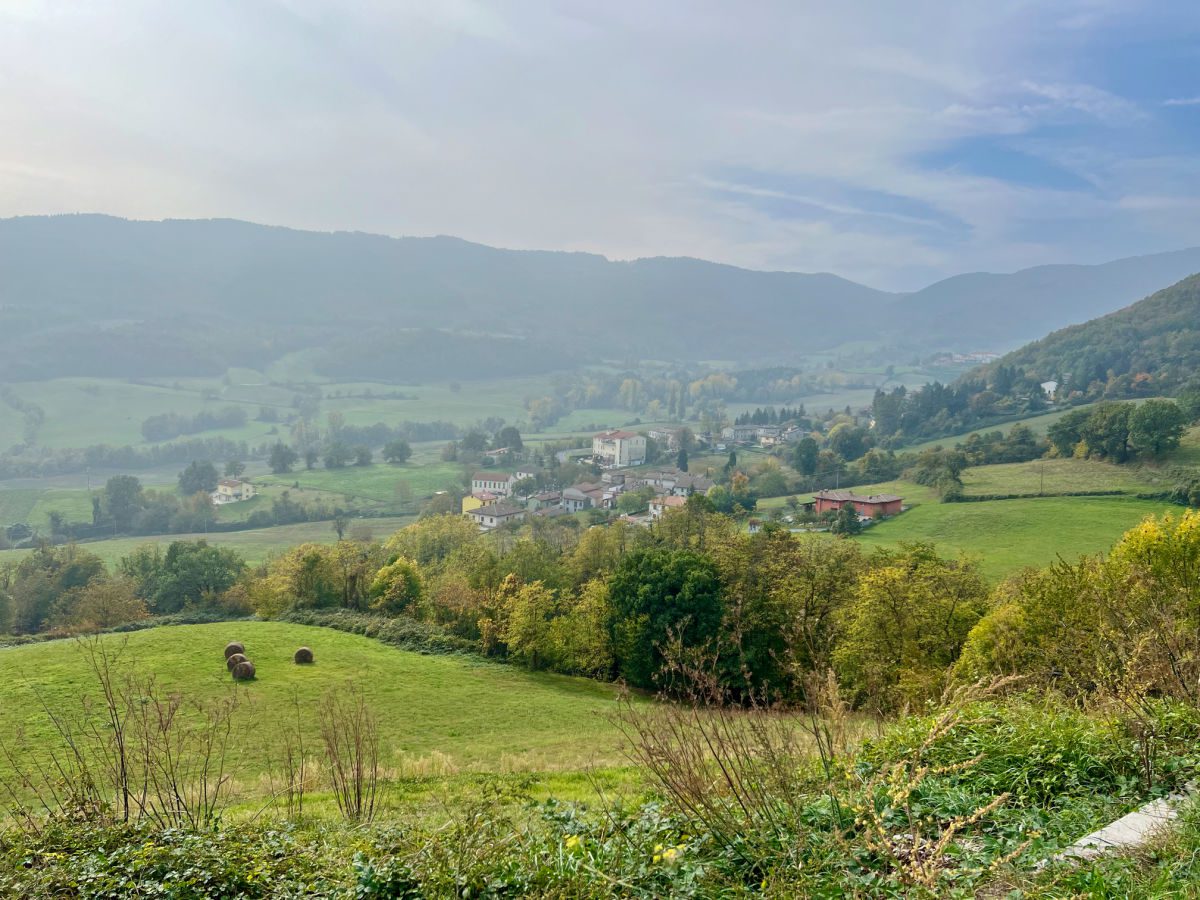
Parma is located in the Emilia-Romagna region of northern Italy and it is easily accessible by train and car from major cities like Bologna, Florence, Venice, and Milan. Train is often the easiest way to get there as it is just 30 minutes from Bologna, 1.25 hours from Milan and 2.5-2.75 from Florence or Venice. Just remember to book your trains in advance (my train from Bologna to Milan was sold out for the entire day I wanted to travel and I needed to get a car service instead.) If you purchase train tickets at the station, remember that you need to validate your ticket before boarding and hold onto your ticket.
If you are driving, the area around Parma is not particularly crowded or challenging, unlike other spots for driving in Italy.
Once you arrive, Parma is a relatively small city and is easily explored on foot. The city center is compact and most attractions are within walking distance of each other. If you prefer not to walk, Parma has a well-connected public transportation system, including buses and a tram line.
Parma in October
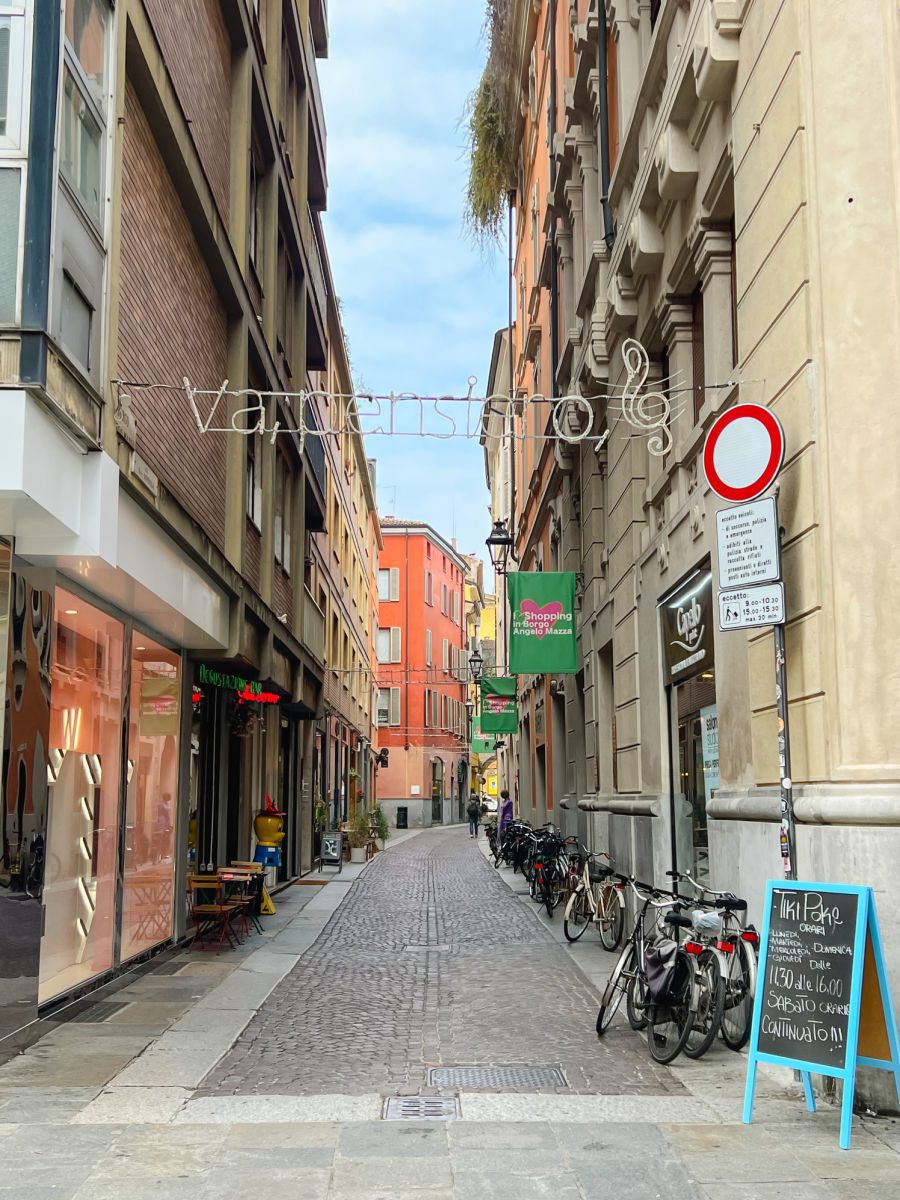
Parma is a bit off-the-beaten tourist track, so you don’t need to worry about crowds as much as you do in the big cities, but summer heat can still be a challenge. In recent years, even the autumn can remain quite warm. If you visit in October, you will experience the city as the leaves begin to change color, which is especially pretty in Ducal Park.
If you visit in the first half of October, you will be there to experience the Verdi Festival and enjoy opera and other musical performances. One thing to note is that many hotels are required to turn off their air conditioning after a certain date, which can make those late autumn heat waves a bit uncomfortable. I’d check with your hotel to see if they have A/C or fans just in case if you are uncomfortable in the heat.
Visiting Italy? You may also be interested in…
Save this to Pinterest
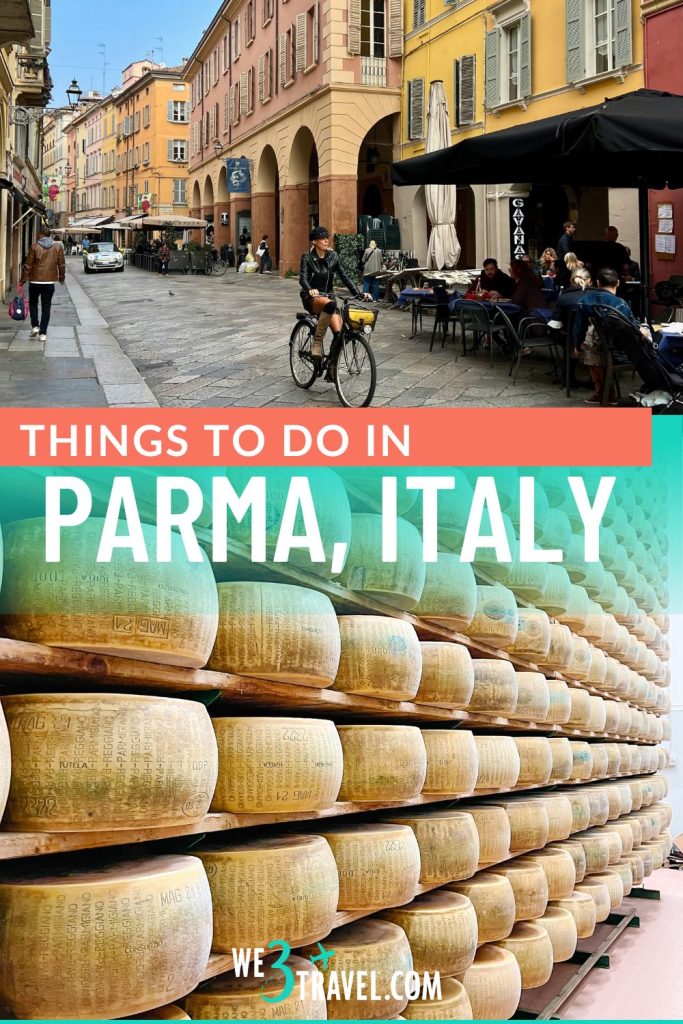

Tamara Gruber is the Founder and Publisher of We3Travel. A former marketing executive and travel advisor, Tamara is an award-winning travel writer and recognized expert in family travel. Tamara is a member of SATW, NATJA, IFWTWA, and the Adventure Travel Trade Association, and serves on the Board of the Family Travel Association. She is also the publisher of YourTimetoFly.com and the co-host of the Vacation Mavens travel podcast.


